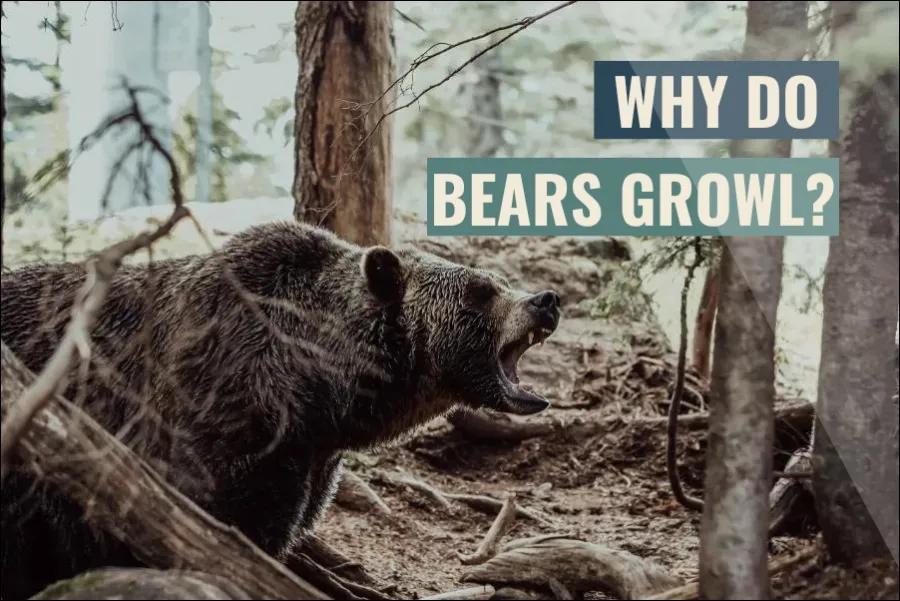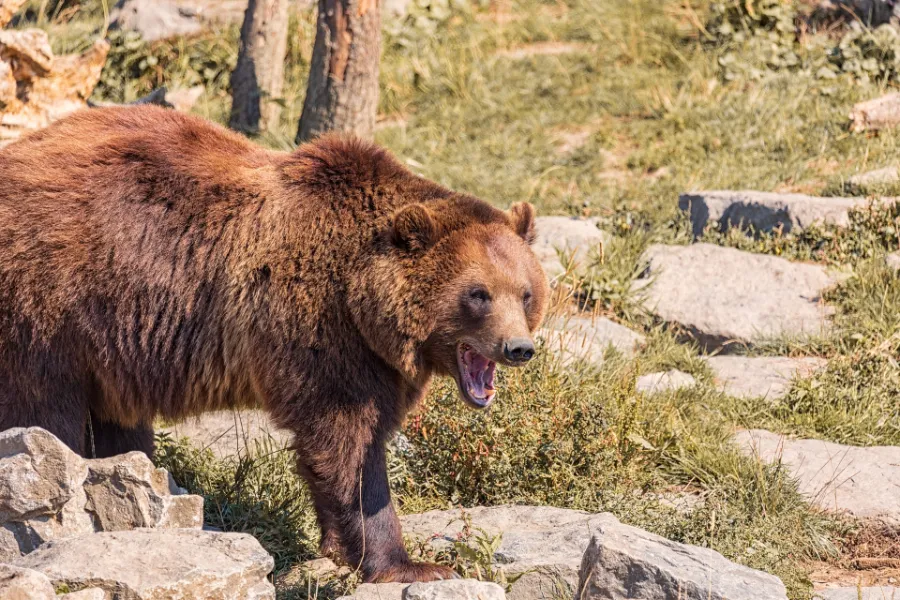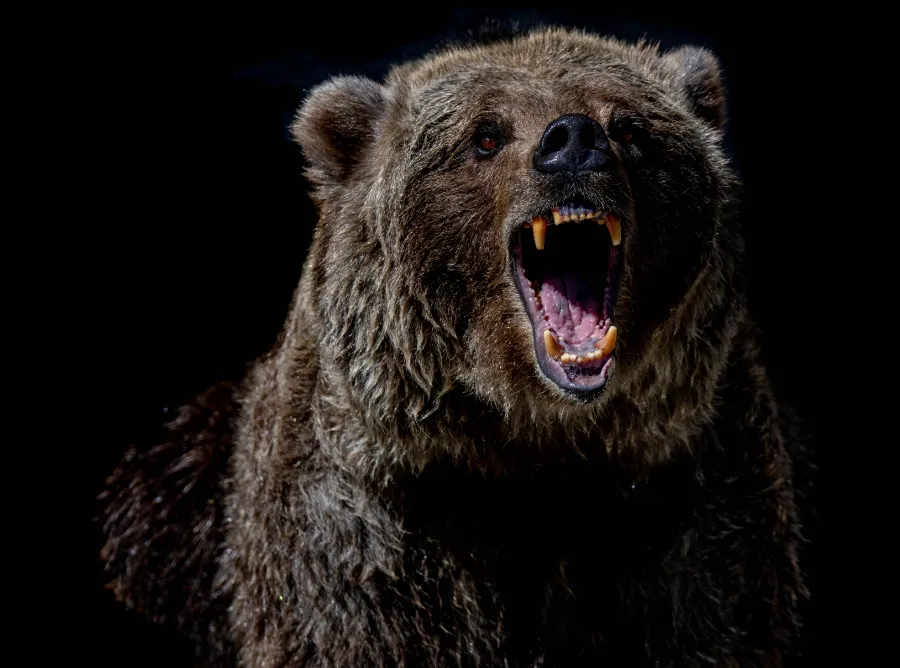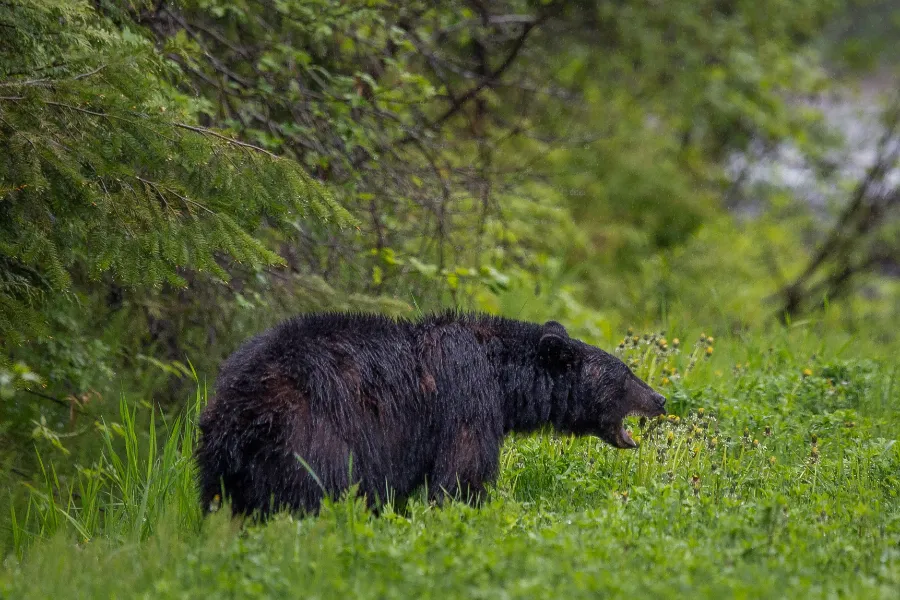
If you’ve ever encountered a growling bear in the wild, you know just how intimidating it can be. But what is the bear trying to say with its growl? In this article, we’ll delve into the different meanings behind bear growls and explore the ways in which bears use this vocalization to communicate.
Bears growl to communicate and express emotions such as threat, annoyance, or aggression. It can be a warning to defend territory or tell others to stay away, or a way to communicate with other bears. It is important to respect a bear’s space and give them room to move away if they growl.
In this article, we will learn why bears growl and how this vocalization is used to communicate and express emotions such as threat, annoyance, or aggression. We will also explore the different meanings behind bear growls and the ways in which bears use this vocalization to communicate with each other and with humans.
Why do bears growl?
Bears growl as a way to communicate and express their emotions. They use growling as a way to convey their intentions and to warn other animals or humans to back off or stay away. For example, a bear may growl if it feels threatened or provoked in some way, such as if another animal or human comes too close to its cubs or food. Growling can be a way for bears to defend themselves and protect what is important to them.
Bears may also growl when they are trying to establish dominance within a group. For example, male bears may growl at each other to assert their dominance during the breeding season or when competing for access to females. Female bears may also growl at each other when they are trying to establish dominance within a group.
In addition to growling when they feel threatened or are trying to establish dominance, bears may also growl when they are feeling aggressive or scared. For example, a bear may growl if it feels that it is being attacked or if it is confronted by a predator. Growling can be a way for bears to communicate their emotions and intentions to other animals or humans.
It is important to remember that bears are wild animals and should be treated with caution and respect. If you encounter a bear in the wild and it starts growling, it is best to slowly and calmly move away and give the bear plenty of space. Do not approach or try to interact with a growling bear, as this could be perceived as a threat and may lead to an aggressive response.

What to do if a bear growls at you?
If you encounter a bear in the wild and it starts growling, it is important to stay calm and try to move away slowly and calmly. Here are some specific steps you can take if a bear growls at you:
- Stay calm: It is important to remain calm and avoid panicking if a bear growls at you. Bear growls are often a warning and not necessarily a sign that the bear is going to attack. By staying calm, you can better assess the situation and decide how to respond.
- Give the bear space: If a bear growls at you, it is important to give the bear plenty of space and not to approach it. Bears need their personal space and may growl as a way to defend it. By giving the bear space, you can avoid threatening the bear and reduce the risk of an aggressive response.
- Avoid eye contact: Avoiding eye contact with the bear can help to reduce the risk of an aggressive response. Eye contact can be perceived as a sign of aggression or a challenge, so it is best to avoid it if possible.
- Move away slowly and calmly: If you need to move away from the bear, do so slowly and calmly. Avoid making any sudden movements or loud noises, as these can be perceived as a threat. It is important to give the bear an escape route and not to block its path.
- Seek shelter: If you are in an area where there is shelter nearby, such as a car or a building, try to get to it as quickly as possible. This can provide some protection from the bear and may help to deter it from attacking.
- Use bear spray: If you have bear spray, consider using it as a deterrent. Bear spray is a type of pepper spray that is designed to deter bears and other large animals. It is important to follow the manufacturer’s instructions for using bear spray and to be aware of the wind direction when deploying it.
- Fight back: If a bear attacks you, try to protect your head and neck and fight back with any available objects. Yelling, hitting, and kicking can all be effective ways to deter a bear.

What does it mean when a bear is grunting?
Bears may grunt as a way to communicate and express their emotions. Grunting can be a way for bears to convey their intentions and to warn other animals or humans to back off or stay away. Here are some possible meanings for bear grunting:
- Warning: Bears may grunt as a way to warn other animals or humans to back off or stay away. This can be a sign that the bear is feeling threatened or annoyed and is trying to communicate this to others.
- Communication: Grunting can be a way for bears to communicate with each other, especially when they are in close proximity. For example, a mother bear may grunt to her cubs as a way to keep them close and to communicate her intentions.
- Social behavior: Bears may grunt as a way to interact with other bears and establish social bonds. For example, bears may grunt at each other as a way to play or as a sign of affection.
- Aggression: In some cases, grunting can be a sign of aggression or a precursor to an attack. If a bear is grunting and exhibiting other aggressive behaviors, such as standing upright or swatting the ground, it is important to give the bear plenty of space and avoid approaching it.
Should you growl at a bear?
It is generally not a good idea to growl at a bear, as this could be perceived as a sign of aggression and may lead to an aggressive response from the bear. Bears use growling as a way to communicate and express their emotions, and they may growl when they feel threatened or provoked. By growling at a bear, you may be perceived as a threat and may increase the risk of an aggressive response.
Instead of growling at a bear, it is important to stay calm and to try to move away slowly and calmly if you encounter a bear in the wild. Avoid making any sudden movements or loud noises, as these can be perceived as a threat. It is also important to give the bear plenty of space and to avoid approaching it or trying to interact with it.
If a bear is growling at you, it is important to give the bear space and to avoid eye contact, as these can be perceived as signs of aggression. Instead, try to slowly and calmly move away from the bear, making sure to give it an escape route. If the bear continues to growl and exhibit aggressive behavior, it may be necessary to use bear spray or other bear-deterrent tools as a way to deter the bear and protect yourself.
Should you yell at a bear?
It is generally not a good idea to yell or make loud noises if you see a bear, as this could be perceived as a sign of aggression and may lead to an aggressive response from the bear. Bears use growling and other vocalizations as a way to communicate and express their emotions, and they may growl or make other noises when they feel threatened or provoked. By yelling at a bear, you may be perceived as a threat and may increase the risk of an aggressive response.
Instead of yelling at a bear, it is important to stay calm and to try to move away slowly and calmly if you encounter a bear in the wild. Avoid making any sudden movements or loud noises, as these can be perceived as a threat. It is also important to give the bear plenty of space and to avoid approaching it or trying to interact with it.
If a bear is exhibiting aggressive behavior, such as growling or charging, it may be necessary to use bear spray or other bear-deterrent tools as a way to deter the bear and protect yourself. In these situations, it may be helpful to make loud noises, such as shouting or clapping, as a way to deter the bear and to alert others to your presence.

In conclusion
Bears growl to communicate and express emotions such as threat, annoyance, or aggression. It can be a warning to defend territory or tell others to stay away, or a way to communicate with other bears. If you encounter a bear in the wild and it starts growling, it is important to stay calm and try to move away slowly and calmly. Avoid making eye contact with the bear and give it plenty of space. If you need to move away, do so slowly and calmly, avoiding any sudden movements or loud noises. If you are in an area with shelter nearby, such as a car or building, try to get to it as quickly as possible. If you have bear spray, consider using it as a deterrent. If the bear does attack, try to protect your head and neck and fight back with any available objects. It is important to remember that bears are wild animals and should be treated with caution and respect.
